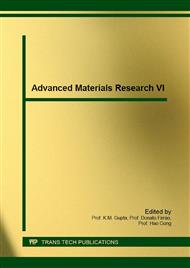p.98
p.103
p.108
p.114
p.121
p.126
p.133
p.138
p.143
Internal Model Control of Autothermal Reformer: Effect of Change in Reactant Amount
Abstract:
As the hydrogen-rich gas produced by autothermal reforming from ethanol is utilized for the power generation via fuel cell, the change in amount of ethanol and water fed into the autothermal reformer has significant effects on the control of electricity generation and autothermal reaction temperature. The change of water and ethanol amounts affecting on the autothermal reformer temperature control system was studied in this work. An internal model control (IMC) method was designed to control the adiabatic reaction temperature of autothermal reformer by manipulating the input air flow rate. Theoretical analysis demonstrated that IMC method can realize desired performance to control the autothermal reaction temperature when the feed amounts were changed. The results of autothemal reformer control system with and without the feed temperature controller of the preheater unit were compared to offer the suitable control system.
Info:
Periodical:
Pages:
121-125
Citation:
Online since:
April 2016
Authors:
Price:
Сopyright:
© 2016 Trans Tech Publications Ltd. All Rights Reserved
Share:
Citation:


